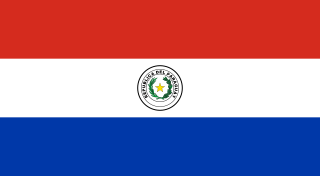| Chlamydastis synedra | |
|---|---|
| Scientific classification | |
| Kingdom: | |
| Phylum: | |
| Class: | |
| Order: | |
| Family: | |
| Genus: | |
| Species: | C. synedra |
| Binomial name | |
| Chlamydastis synedra (Meyrick, 1916) | |
| Synonyms | |
| |
Chlamydastis synedra is a moth of the family Depressariidae. It is found in Paraguay. [1]

Moths comprise a group of insects related to butterflies, belonging to the order Lepidoptera. Most lepidopterans are moths, and there are thought to be approximately 160,000 species of moth, many of which have yet to be described. Most species of moth are nocturnal, but there are also crepuscular and diurnal species.

Depressariidae is a family of moths. It has formerly been treated as a subfamily of Gelechiidae, but is now recognised as a separate family, comprising about 2300 species worldwide.

Paraguay, officially the Republic of Paraguay, is a country in South America. It is bordered by Argentina to the south and southwest, Brazil to the east and northeast, and Bolivia to the northwest. Although it is one of only two landlocked countries in South America, the country has coasts, beaches and ports on the Paraguay and Paraná rivers that give exit to the Atlantic Ocean through the Paraná-Paraguay Waterway. Due to its central location in South America, it is sometimes referred to as Corazón de Sudamérica.
The wingspan is about 18 mm. The forewings are very pale brownish-ochreous with a small brown spot on the costa at one-fourth, a small faint brownish spot towards the dorsum in the middle, and three minute groups of raised black and brownish scales forming a nearly straight line with these, two representing the first discal and plical stigmata. There is a brown spot on the middle of the costa, where a faintly sinuate row of dark fuscous marks suffused with brownish runs to the dorsum before the tornus. There is also a median blackish dot representing the second discal stigma and a strongly curved brownish line, suffusedly dotted with dark fuscous, from a suffused spot on the costa at three-fourths to the tornus. A thick brown streak, marked with blackish, runs from the middle of the postmedian line to below the middle of the termen, indistinctly interrupted before the subterminal line. The hindwings are light grey, suffused with whitish anteriorly. [2]

The wingspan of a bird or an airplane is the distance from one wingtip to the other wingtip. For example, the Boeing 777-200 has a wingspan of 60.93 metres, and a wandering albatross caught in 1965 had a wingspan of 3.63 metres, the official record for a living bird. The term wingspan, more technically extent, is also used for other winged animals such as pterosaurs, bats, insects, etc., and other fixed-wing aircraft such as ornithopters. In humans, the term wingspan also refers to the arm span, which is distance between the length from one end of an individual's arms to the other when raised parallel to the ground at shoulder height at a 90º angle. Former professional basketball player Manute Bol stands at 7 ft 7 in (2.31 m) and owns one of the largest wingspans at 8 ft 6 in (2.59 m).